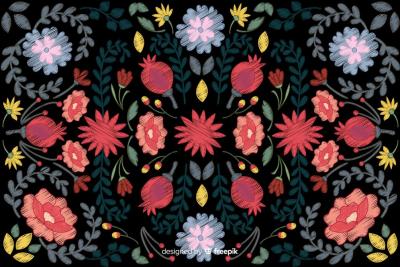Is Applique Embroidery Digitizing Worth It?
-
Introduction
Let’s be real—when you hear the phrase "applique embroidery digitizing," it might sound like a mouthful of tech-jargon meets crafty creativity. But if you’re in the world of embroidery, fashion, or custom merch, this might just be the secret sauce you’ve been missing. So the burning question is: Is applique embroidery digitizing actually worth it? Spoiler alert—yes, and here’s why.
What Is Applique Embroidery Digitizing?
Understanding Applique
Applique is like giving your fabric a makeover. It’s a decorative technique where one piece of fabric is sewn on top of another to create patterns or images. Think of it as fabric on fabric—but make it fashion.
The Role of Digitizing
Now add tech to the mix. Digitizing turns a regular design or artwork into a digital embroidery file that machines can read. When it comes to applique, digitizing doesn’t just map out stitches; it guides the machine to place, tack, and stitch the applique fabric like a pro.
How Does Applique Digitizing Work?
Tools and Software Involved
To digitize an applique design, you’ll need specialized embroidery digitizing software—like Wilcom, Hatch, or Brother PE-Design. These tools let you convert graphics into stitch-ready files while also adding placement, tack-down, and finishing stitches for your applique.
Step-by-Step Breakdown
-
Import the design into your digitizing software.
-
Define the applique area—where your fabric piece will go.
-
Add placement stitches so you know where to lay the fabric.
-
Include tack-down stitches to secure it.
-
Finish with cover stitches to clean up the edges.
Easy? Kind of. Satisfying? Definitely.
Benefits of Applique Embroidery Digitizing
Cost-Effective for Large Runs
Using applique means less thread and less time stitching. That translates to major savings—especially when you're running hundreds (or thousands) of pieces.
Clean, Professional Finishes
Let’s be honest—applique just looks good. It adds texture, color depth, and crispness you can’t always get with thread alone.
Speeds Up Production
Because you’re not stitching every inch of a fill area, applique drastically cuts down machine time. That means faster turnarounds and happier clients.
Common Applications in the Industry
Fashion and Apparel
Applique is a staple in high-end fashion. From varsity jackets to couture designs, it’s all about making a bold statement with fabric overlays.
Promotional Merchandise
Want your logo to pop on a hoodie or cap? Applique digitizing makes it stand out—and adds a tactile, premium feel.
Personalized Gifts
Monogrammed towels, baby blankets, and tote bags? Applique brings that charming, handcrafted touch people love.
Comparing Applique Digitizing to Other Methods
Versus Traditional Embroidery
Traditional embroidery fills the entire design with thread, which takes longer and may not give the same visual pop. Applique offers a dynamic alternative with minimal effort.
Versus Screen Printing
Sure, screen printing is fast. But it fades over time. Applique embroidery digitizing gives you texture, longevity, and elegance that printing can’t touch.
Challenges You Might Face
Design Limitations
Not all designs are created equal. Applique works best with bold, simple shapes. Intricate details? Those are better left to satin stitches.
Fabric Compatibility
Stretchy or slippery fabrics can be tricky. Applique prefers stable materials like cotton, denim, or felt. Know your fabric before you digitize.
Is It Right for Beginners?
Learning Curve Explained
The basics are manageable, but perfecting applique digitizing takes practice. Understanding the stitch types and fabric behavior is key.
When to Hire a Pro
If your brand depends on polished embroidery, it might be worth outsourcing to a digitizing expert—at least until you’re confident with the process.
ROI: Is It Worth the Investment?
Time vs. Output
Yes, there’s an upfront learning curve or cost if you hire someone. But over time, applique saves production hours and thread costs, giving you more bang for your buck.
Cost vs. Quality
High-quality applique designs scream premium. Whether you’re selling or gifting, the finished product justifies the investment every time.
Expert Tips for Success
Start with Simple Shapes
Think stars, circles, and block letters. The simpler the shape, the cleaner the result.
Choose the Right Fabric
Avoid stretch and slick fabrics. Opt for stable pieces that won’t fray or pucker.
Use High-Quality Digitizing Software
Your software is your toolbox. Don’t skimp—invest in a program that allows full control over stitch settings, layers, and sequencing.
Final Verdict
So, is applique embroidery digitizing worth it? Absolutely. It offers style, speed, savings, and sophistication all rolled into one. Whether you're starting a custom apparel business or looking to level up your embroidery game, applique digitizing gives you that extra edge.
Sure, there’s a learning curve, and yes, you’ll need some good software (and patience). But once you get the hang of it—or hire someone who already has—you’ll wonder why you didn’t jump in sooner.
-
